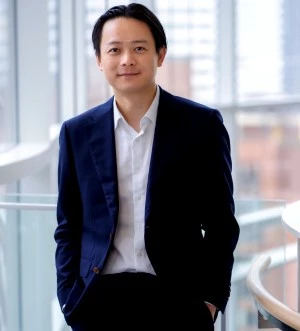Scientists at The Hospital for Sick Children (SickKids) and the University of Toronto (U of T) have combined forces to develop a new approach to potentially treat tumour cells, called mechanical nanosurgery, even for aggressive, chemoresistant cancers.
Glioblastoma (GBM) is the most common and aggressive primary brain cancer. Despite various treatment options that exist, including surgery, radiotherapy, and chemotherapy, the median survival time for patients is only around 15 months.
The current global standard-of-care treatment for GBM patients includes chemotherapy using a drug called temozolomide (TMZ), which extends a person’s life expectancy by approximately two months compared to patients receiving radiotherapy alone. However, GBM cells can develop resistance to TMZ over time, reducing its efficacy and increasing the likelihood of tumour relapse.
In a study published in Science Advances, Dr. Xi Huang, a Senior Scientist in the Developmental & Stem Cell Biology program at SickKids, and Dr. Yu Sun, Professor of Mechanical Engineering and Director of the Robotics Institute at U of T, present a new approach to treat chemoresistant GBM using precision magnetic control in a process they call mechanical nanosurgery. This research was funded in part by OICR.
“Through the use of nanotechnology deep inside cancer cells, mechanical nanosurgery is a ‘Trojan Horse’ approach that could allow us to destroy tumour cells from within,” says Huang, whose previous research demonstrating that brain tumour cells are mechanosensitive helped to inform the approach. “By combining our expertise in biochemistry at SickKids and engineering at U of T, we’ve developed a potential new way to treat aggressive brain cancer.”

Developed with first author Dr. Xian Wang, current Assistant Professor at Queen’s University, former post-doctoral fellow in the Huang Lab and winner of a Lap-Chee Tsui Fellowship through the SickKids Research Training Centre, the mouse model used in the study showed that the mechanical nanosurgery process reduced GBM tumour size universally, including in TMZ-resistant GBM.
Mechanical nanosurgery explained
Magnetic carbon nanotubes (mCNTs) are a form of nanomaterial – microscopic cylindrically-shaped tubes made of carbon and, in this case, filled with iron that becomes magnetized when activated by an external magnetic field. In the study, the research team coated mCNTs with an antibody that recognizes a specific protein associated with GBM tumour cells. Once injected into the tumour, the antibodies on the mCNTs cause them to seek out tumour cells and are absorbed by them.
“Once the nanotubes are inside the tumour cell, we use a rotating magnetic field to mechanically mobilize the nanotubes to provide mechanical stimulation,” says Sun. “The force exerted by the nanotubes damages cellular structures and cause tumour cell death.”
Exploring applications beyond brain cancer
Huang’s partnership with Sun at the U of T Department of Mechanical Engineering is continuing to build on the study findings. As their research continues, they note that mechanical nanosurgery may have further applications in other cancer types.
“Theoretically, by changing the antibody coating and redirecting nanotubes to the desired tumour site, we could potentially have a means to precisely destroy tumour cells in other cancers,” says Huang.
This research was funded by the Canadian Institutes of Health Research (CIHR), National Sciences and Engineering Research Council, Ontario Research Fund, Canadian Cancer Society, Concern Foundation, b.r.a.i.n.child, Sontag Foundation, Meagan’s HUG, Ontario Institute for Cancer Research, Brain Tumour Foundation of Canada, Hopper-Belmont Foundation, Arthur and Sonia Labatt Brain Tumour Research Centre, Garron Family Cancer Centre, and SickKids Foundation.
This story was originally published by the Hospital for Sick Children (SickKids) and has been reposted with permission. The original post can be viewed at: https://www.sickkids.ca/mecnano

